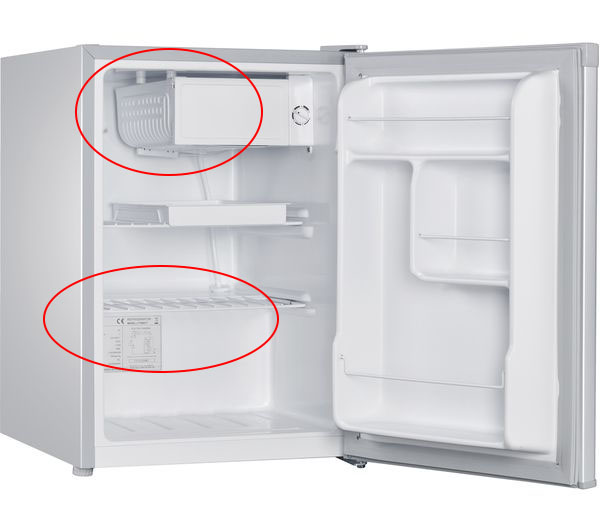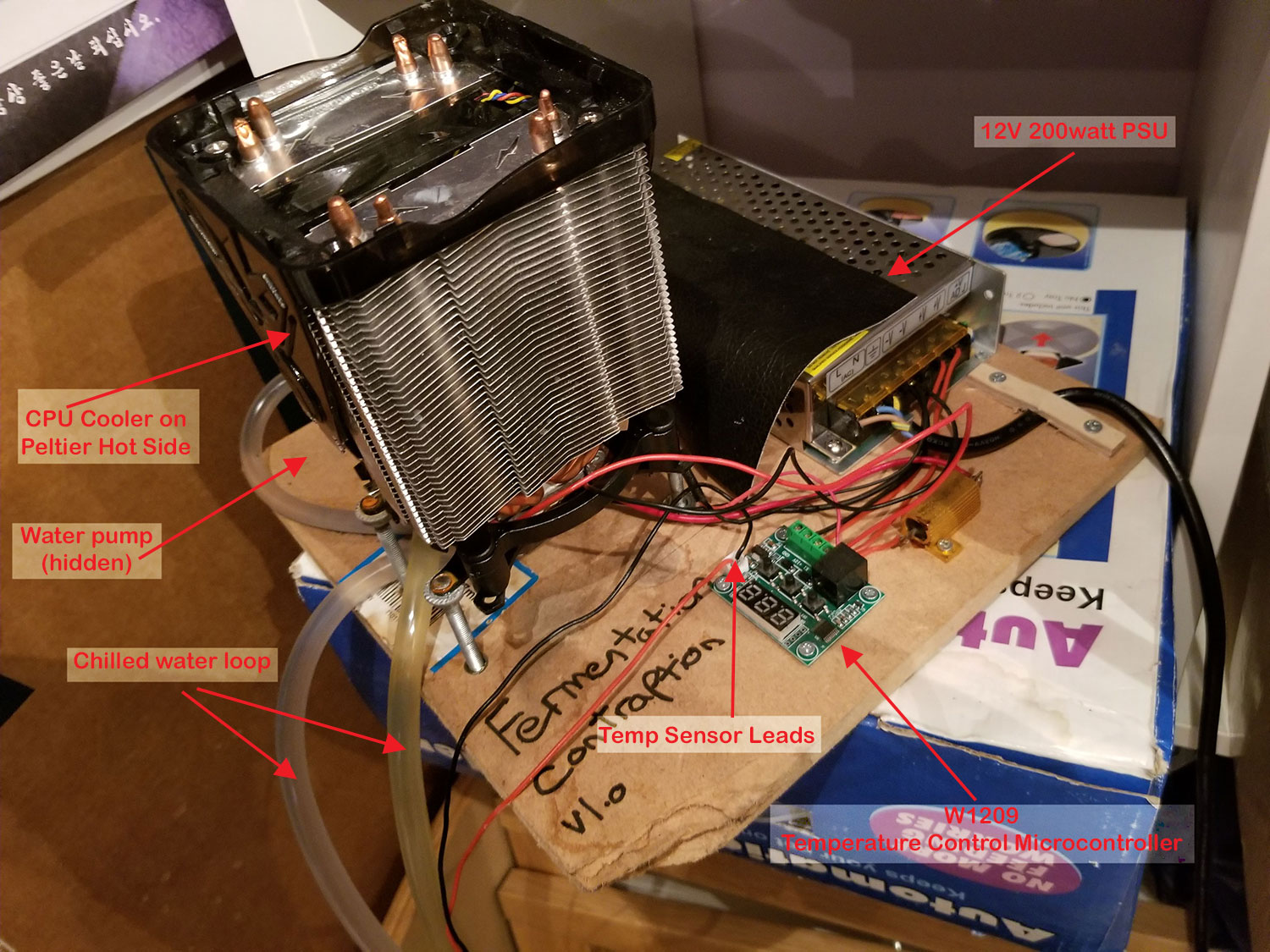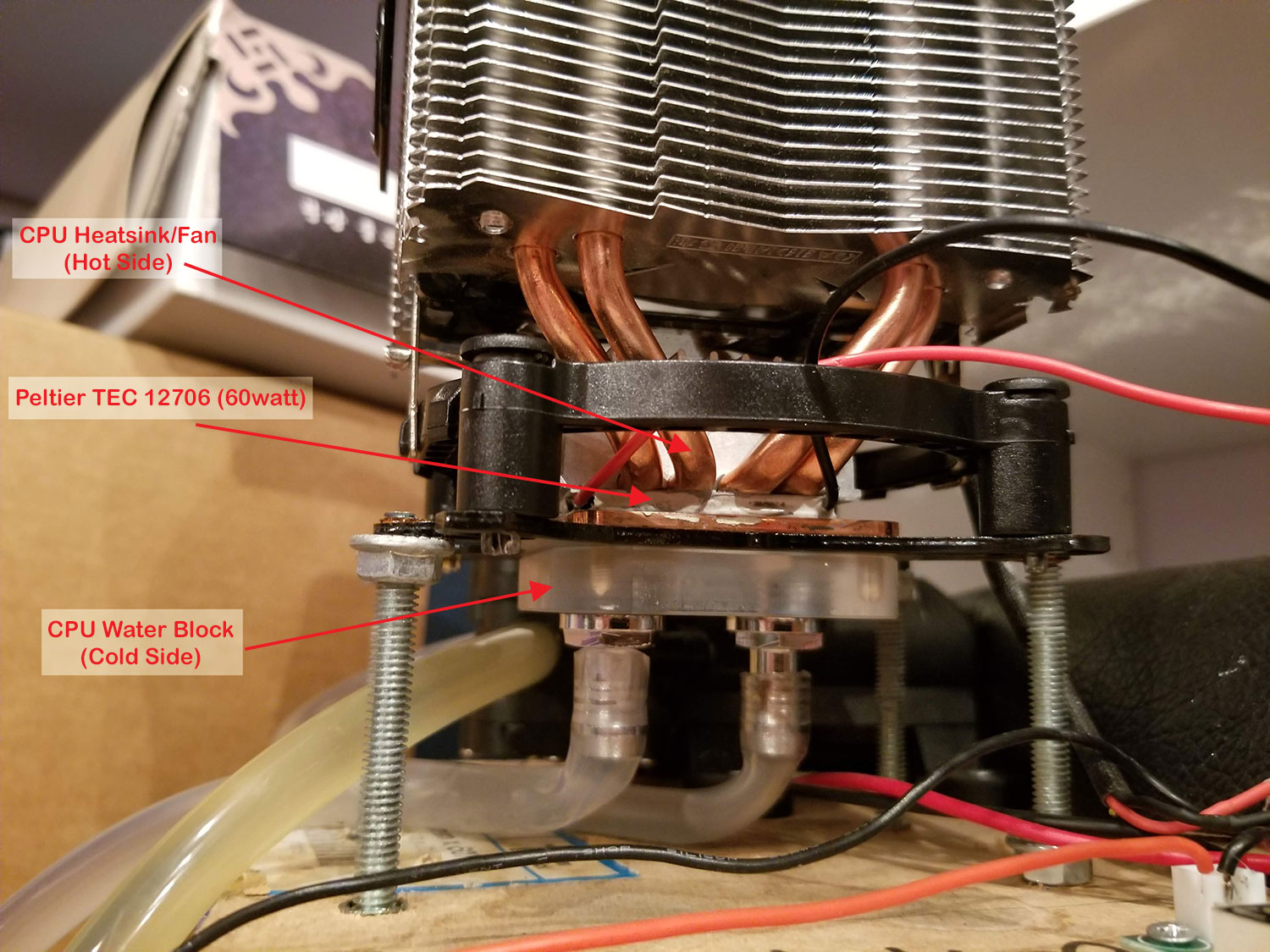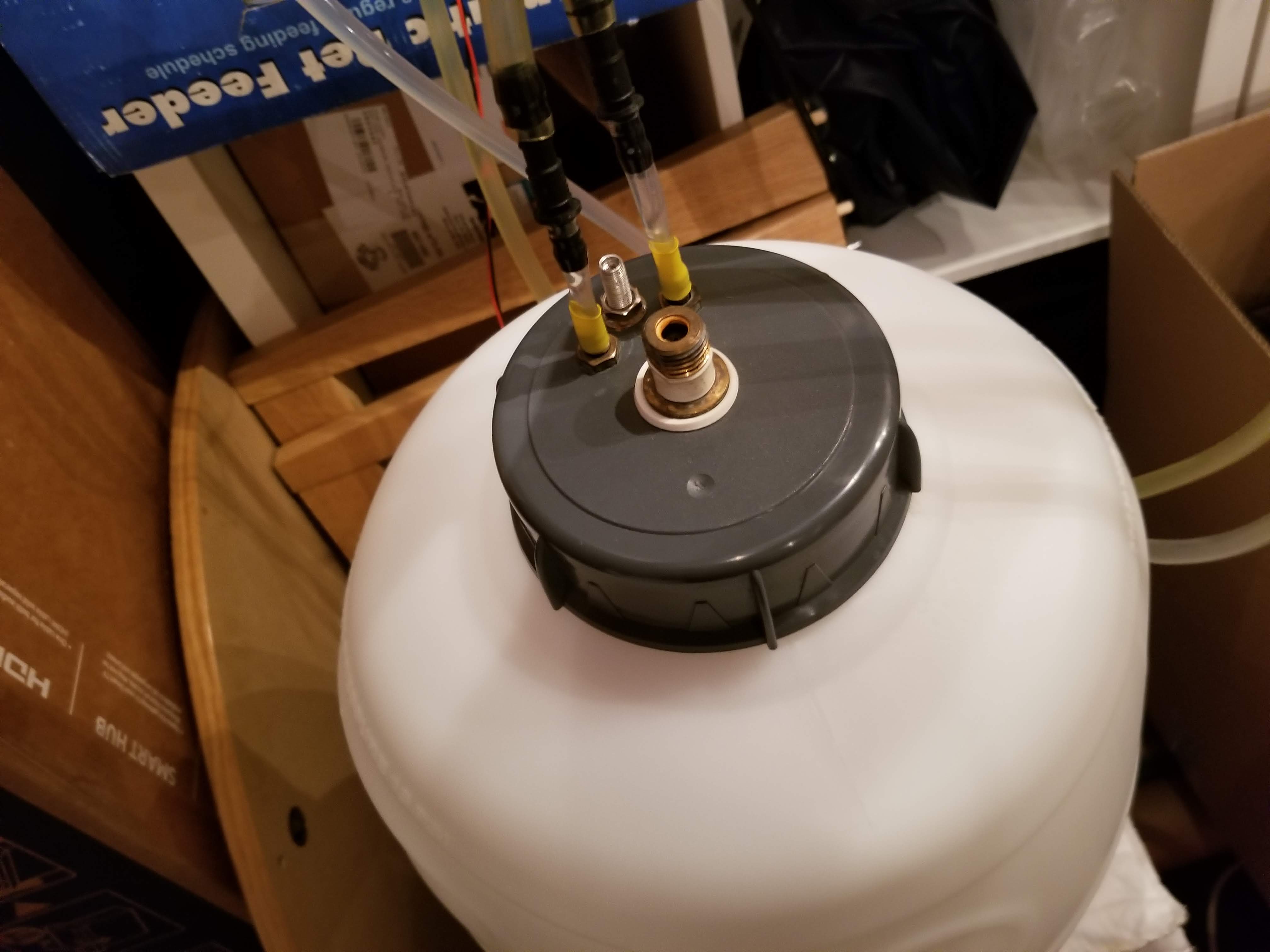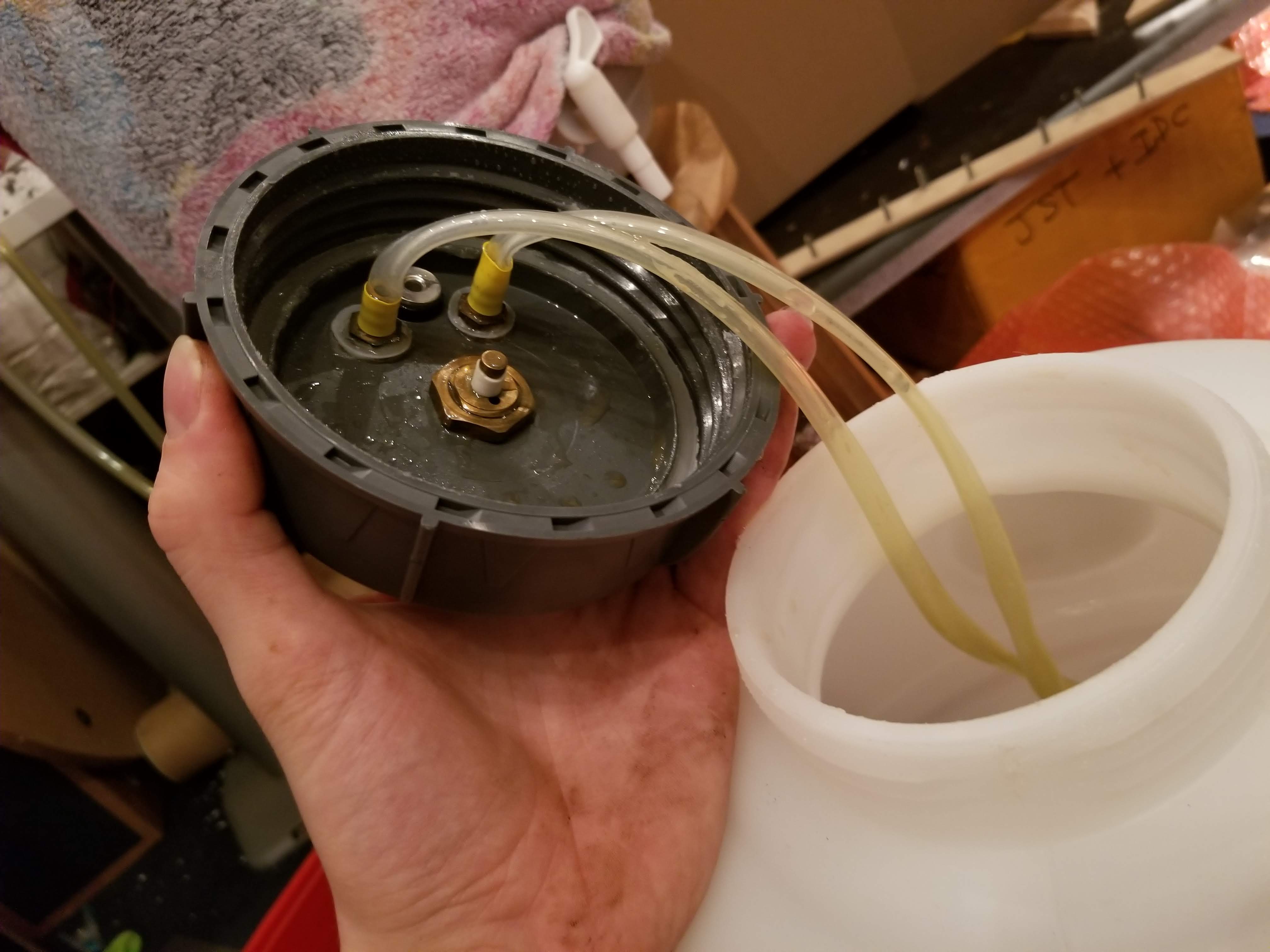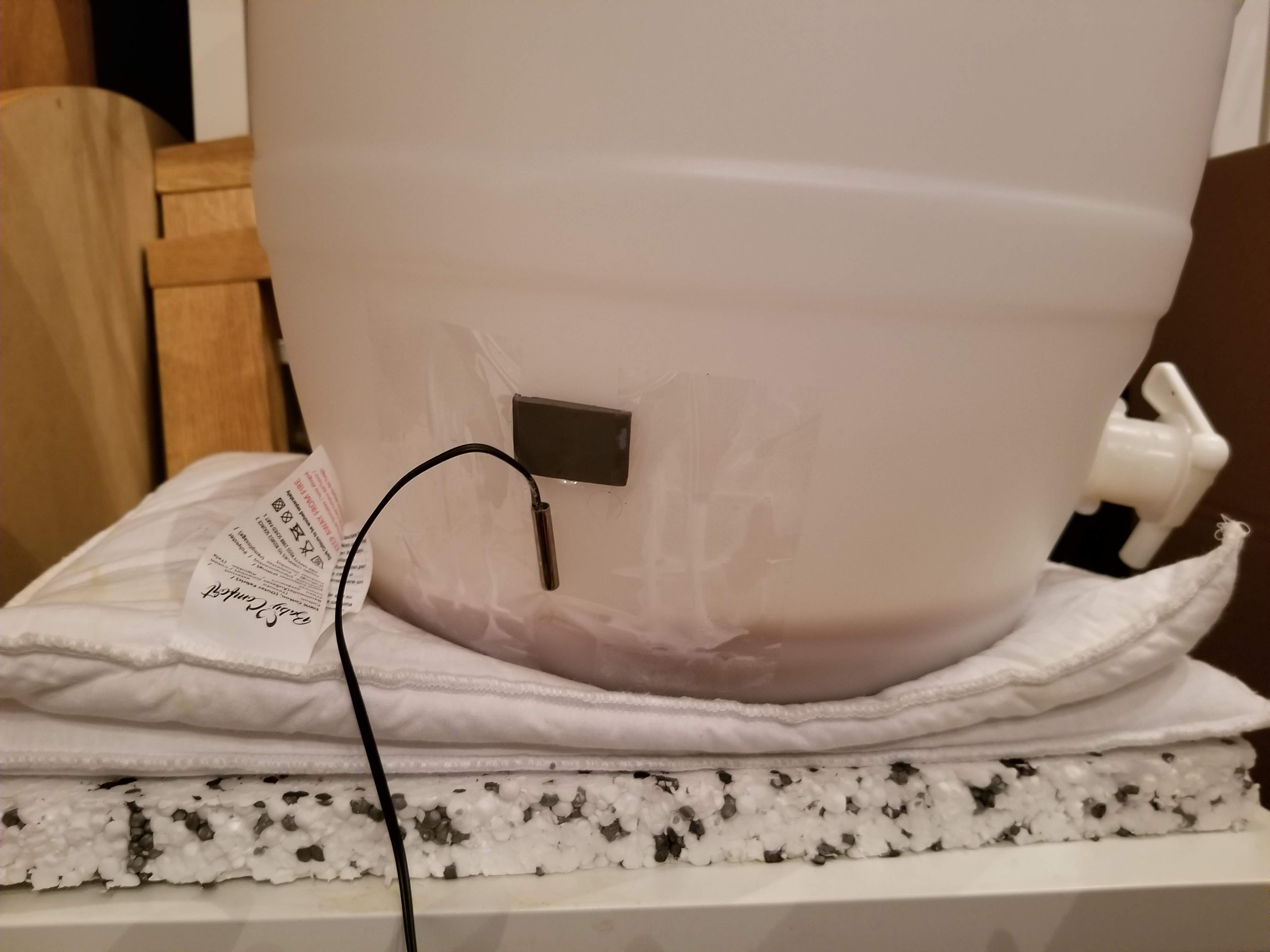ssashton
Regular.
- Joined
- Apr 17, 2019
- Messages
- 226
- Reaction score
- 71
Hi Guys and Gals,
I'm curious, how do each of you control temps during fermentation and also conditioning? Just changing rooms?
My cellar is not very deep so in the summer (like now) it can be as warm as 20C (main rooms 24C). Also I have noticed that even in a cool room, during fermentation, the liquid temperature can be well above ambient say 22C while room at 19C.
I do not have space for a dedicated fridge. So being an engineer I built a kind of temperature control device mostly using PC water cooling components. Water pump, coolant loop, peltier cooler or resistive heater and some micro-controller brains.
If I posted details about how I built it, would you be interested in making our own?
I was considering making a kind of DIY kit that can either warm or cool beer during fermentation and conditioning but would like to know if there is interest.
Mostly I built mine because my cellar is rarely lower than 16C but conditioning is often said to be done around 11C, so I can chill it down with a blanket around the keg. I later found I can place the fermenter in the cellar (usually too cold for fermentation) and then use a resistive heater to maintain a steady 19C liquid temp as per my fav recipe. While the main rooms are too warm.
Yes I'm aware of the 'Brew Jacket', and this would be more Do It Yourself and affordable - some tubing, pump, power supply and instructions. Any interest?
I'm curious, how do each of you control temps during fermentation and also conditioning? Just changing rooms?
My cellar is not very deep so in the summer (like now) it can be as warm as 20C (main rooms 24C). Also I have noticed that even in a cool room, during fermentation, the liquid temperature can be well above ambient say 22C while room at 19C.
I do not have space for a dedicated fridge. So being an engineer I built a kind of temperature control device mostly using PC water cooling components. Water pump, coolant loop, peltier cooler or resistive heater and some micro-controller brains.
If I posted details about how I built it, would you be interested in making our own?
I was considering making a kind of DIY kit that can either warm or cool beer during fermentation and conditioning but would like to know if there is interest.
Mostly I built mine because my cellar is rarely lower than 16C but conditioning is often said to be done around 11C, so I can chill it down with a blanket around the keg. I later found I can place the fermenter in the cellar (usually too cold for fermentation) and then use a resistive heater to maintain a steady 19C liquid temp as per my fav recipe. While the main rooms are too warm.
Yes I'm aware of the 'Brew Jacket', and this would be more Do It Yourself and affordable - some tubing, pump, power supply and instructions. Any interest?







